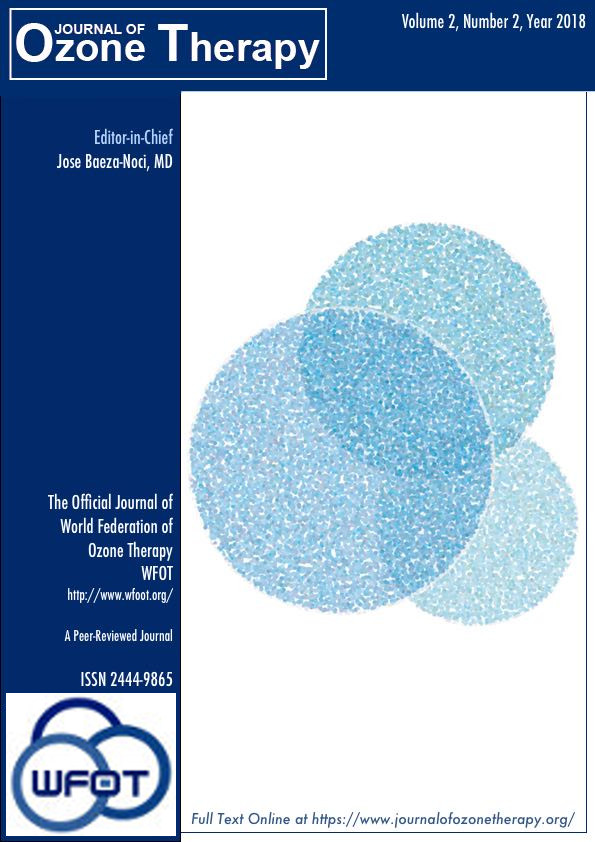Ozone in the treatment of musculoskeletal infections [abstract]
DOI:
https://doi.org/10.7203/jo3t.2.2.2018.11149Palavras-chave:
ozone, foot ulcers, chronic osteomyelitis, ozone bagging, rectal insufflations Resumo
Resumo
Ozone, an antibacterial, has a spectrum of action which is bigger than any antibiotic known today. Very few bacteria can resist the onslaught of ozone and this is again dependent on the route of delivery of the ozone- oxygen mixture. Musculoskeletal infections, mainly chronic osteomyelitis and foot ulcers, were taken as criteria for study. Chronic osteomyelitis of the long bones, mainly the tibia was preferred as route of entry into the marrow cavity is easier. Foot ulcers, diabetic or trophic were selected on random basis. Graphic representation based on dimension and pictures taken on regular intervals were the criteria for evidence of healing. All cases were subjected to a short course of antibiotics, based on culture and sensitivity reports, and ozone was added as an adjuvant to see whether ozone hastens recovery and if yes, the quality of recovery, the reduction in financial burden and the requirement of surgery like skin grafts or amputations. All cases were treated using ozone bagging and rectal insufflations on alternate days. It was concluded that ozone not only hastens the healing process, provides antibacterial remedy, but also ensures the healing occurs with good granulation tissue and without the requirement of a skin graft.
 Downloads
Downloads
Downloads
Publicado
Como Citar
-
Resumo843
-
PDF 378
Edição
Secção
Licença
Journal of Ozone Therapy applies the Creative Commons Attribution-NonCommercial 4.0 International License (CC BY NC 4.0) license to works we publish.
Under this license, authors retain ownership of the copyright for their content, but allow anyone to download, reuse, reprint, modify, distribute and/or copy the content as long as the original authors and source are cited. No permission is required from the authors or the publishers.
You may not use the material for commercial purposes.
Appropriate attribution can be provided by simply citing the original article, provide a link to the license, and indicate if changes were made.
You may do so in any reasonable manner, but not in any way that suggests the licensor endorses you or your use.




